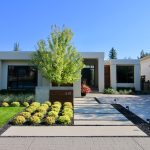As implied by the name, shade nets are a specific kind of net that extremely important in controlling the entry of sunlight, moisture, or air through gaps in the woven cloth. Frame and cladding materials make up the framework of a shade net house. Protect the Argo products from heat, rain, and strong winds materials creates. Without sacrificing their functionality, these agricultural shade cloth last for a very long time.
Why Do We use greenhouse netting?
Many aspects of the agriculture industry have revolutionised by the usage of agricultural shade cloth netting.
We list a few advantages of using these networks as follows:
- With use greenhouse netting, the cultivation of flower plants, medicinal plants, foliage plants, fragrant plants, spices, and vegetables has improved.
- Fruit and vegetable nurseries have been grown utilising shade netting for greenhouses.
- It aids in boosting agricultural yields during the summer.
- Pesticide resistance in plants.
- It shields the crops from various environmental threats, including wind, rain, hail, snow, and other weather-related factors.
- Donates to the growth of young seedlings by grafting and lowers their mortality rate during hot weather.
- These nets provide hardening for plants used in tissue culture.

What shade of net for a greenhouse should you use?
There are numerous colours available for greenhouse shade nets. Which shade net is the best is crucial for us to know because it is not a matter of choosing attractiveness; each has unique benefits and features. When selecting a shade net, it’s critical to understand that different shades of the shade net have varied effects on the growth of various plants. As a result, it’s crucial that we pick the shade net that will best support the plant’s healthy development.
How to choose a shade cloth?
It’s possible to knit or weave a shade cloth. The polyethylene blend used to make the knitted shade cloth scatters heat and light. Even though it is lightweight, it can survive wear and tear. While the woven shade cloth is composed entirely of polypropylene, it is more appropriate for usage in the winter.
Ratio of density
- A 30 per cent – plants that can withstand heat, such pepper, squash, and tomato, are advised to use this shade cloth. Additionally, flowering plants like chrysanthemums, geraniums, and snapdragons can be grown in it.
- A 40–50% moisture content is optimal for flowering plants, including lilies, caladiums, orchids, azaleas, begonias, and camellias.













